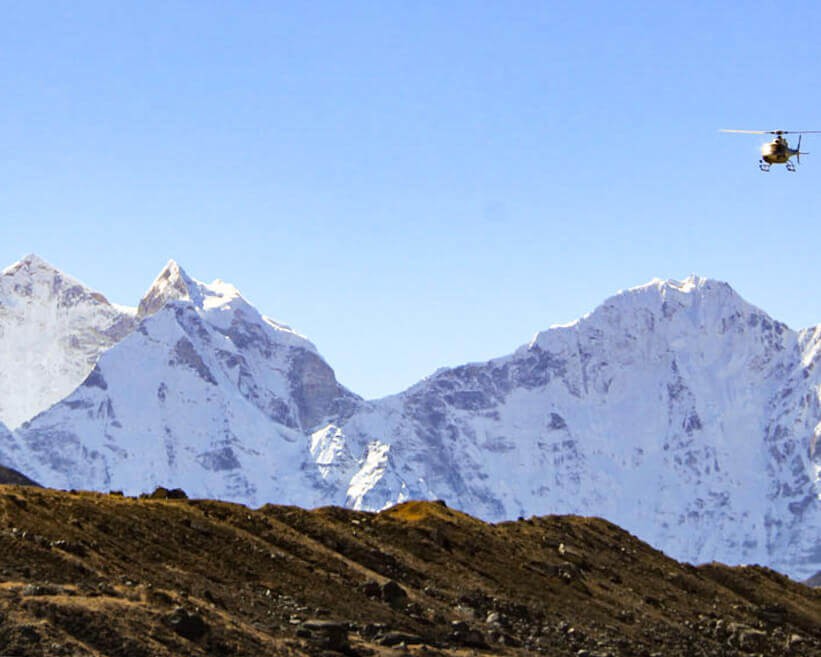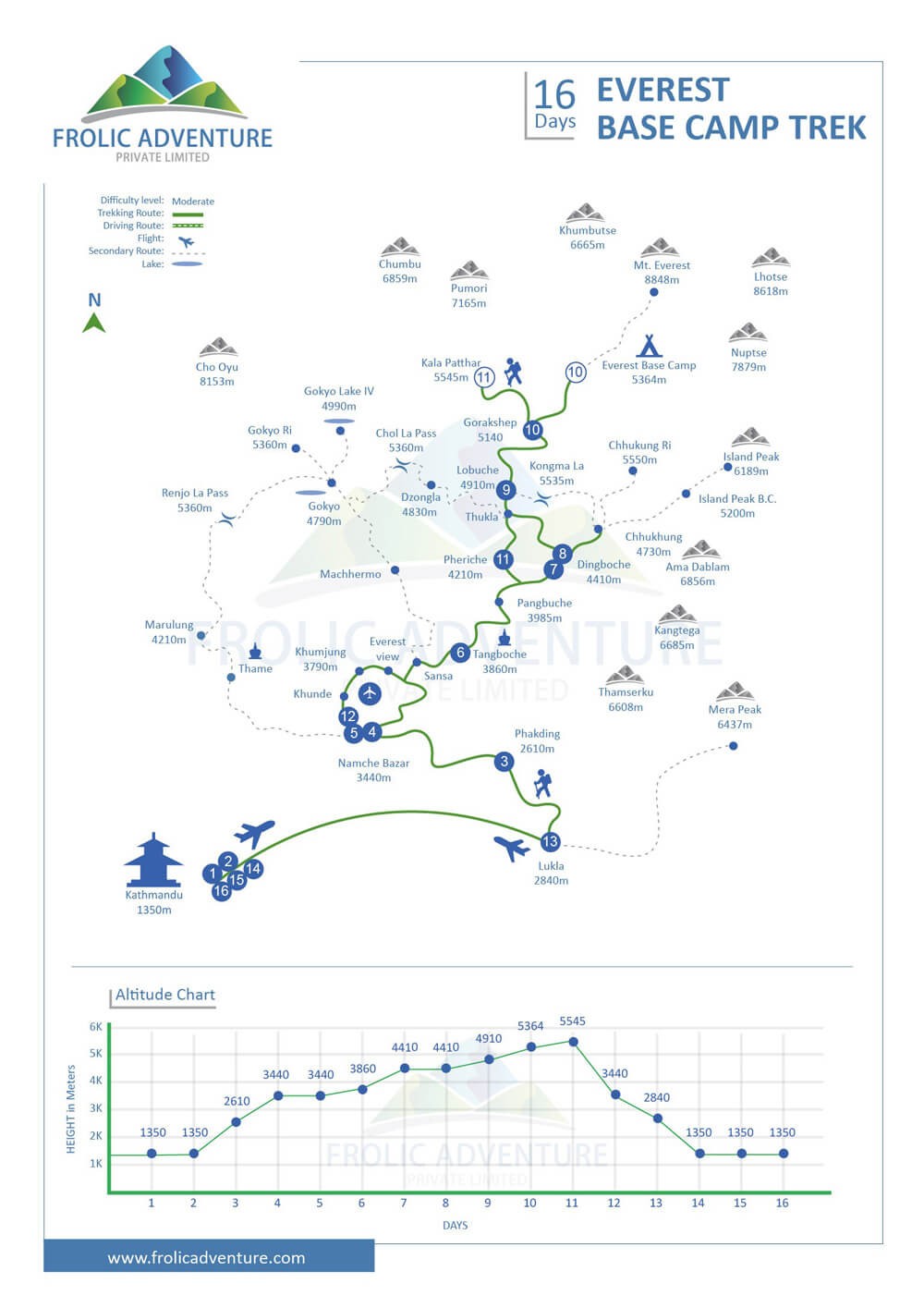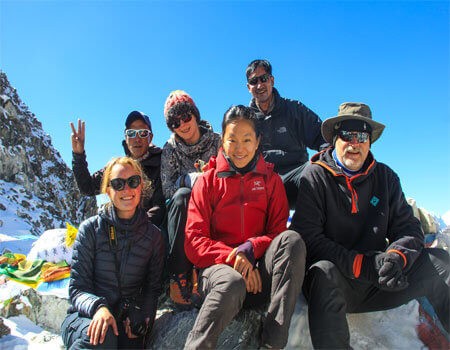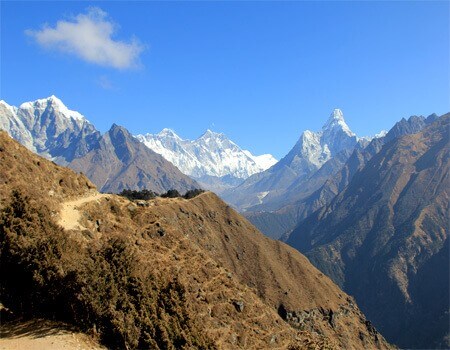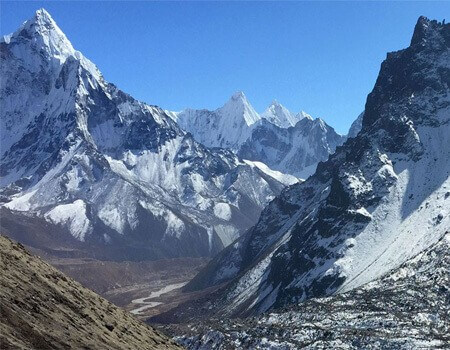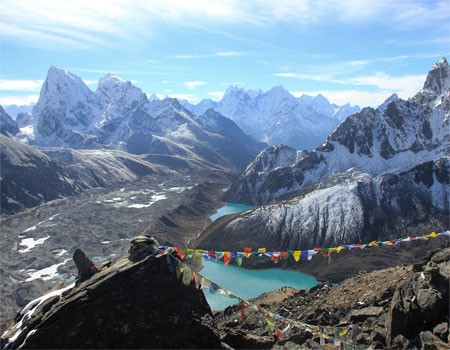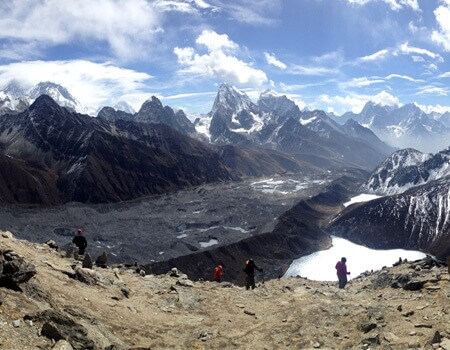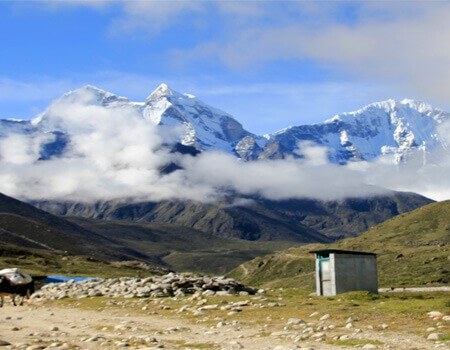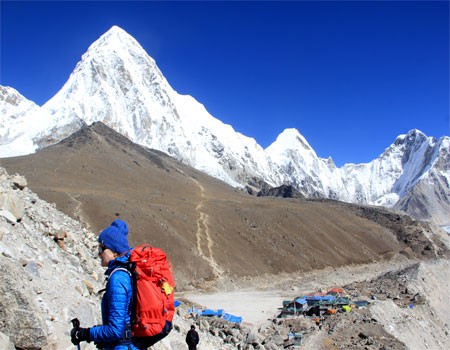Useful Info
Best Time for Everest Base Camp Trek with Helicopter Return
The 9-day Everest Base Camp Trek with Helicopter Return can be done in the autumn and spring. These are the main trekking seasons in Nepal, so these are the best times to trek all over the Nepalese Himalayas.
September to November and March to May are the best times for the EBC Heli Return Trek. Although, until mid-September in the autumn and late May in the spring, there might be some rainy days. So, from the midpoint of September to the end of November and from March until the second week of May, we have many trekkers who have been recommended for this 9-day Trek.
December offers the best view and clear weather, but it is also the start of the winter season. It would be best to have excellent warm Trekking equipment for a winter 'Flight Back EBC Trekking.' But don’t try to Trek during the summer months. The summer season has many rainy days—from June to August or even until mid-September, the rainy season remains. We can say that mid-September to December and March to Mid-May are the best times for the trip.
Trekking Gear for Helicopter Return Everest Base Camp Trek
You are jumping into a cold region, so you must have warm Trekking Gear for the 'Helicopter Return Everest Base Camp Trek.' You can never think of making the Everest Base Camp Trek with a Helicopter Flight Back without an excellent Trekking kit, so check out the essential packing list for a fly-back Trek with a Helicopter Return.
On a flyback by Helicopter Tour, you will visit the same places and heights as on a 12-Day Base Camp Trek. It needs proper Trekking equipment, as trekkers need a 12-day EBC Trek. What source of trekking gear is essential, then? Check out the packing list for the trek here.
Helicopter Return EBC Trek Cost
The Everest Base Camp Trek with Helicopter Return is more expensive than the standard Trekking package because of the Flight Cost from Gorakshep. The Helicopter charges 4000 USD from Gorakshep to Kathmandu, and only five people can fly if it is morning time. If it becomes late, there will be wind, and it will be difficult for the Helicopter full of passengers. The listed cost is 1900 USD per person for a group of 2 people and is for group sharing. But the Cost will be much cheaper if you are in a group. For the customized price of the Heli Everest Trek, please contact us and mention the number of visitors.
Four trekkers and a guide can fly from Gorakshep, and porters will return to Lukla. We only take bookings from 2–5 trekkers in one group, so the price differs depending on the group size. Please know the price of a helicopter. Return from Everest before booking the trip. Check the trip cost according to the group size here:
Everest Base Camp Trek Return by Helicopter is a beautiful mountain journey, a lifetime walking experience, and a luxury flight above the high mountains. It is, of course, a delightful mountain trip, but there are some difficulties that trekkers will face. What are the problems with the trip? Check them out now:
Altitude Sickness
Altitude Sickness is the dominant difficulty of the Everest Base Camp Trek Return by Helicopter. Because of oxygen levels in the air and high atmospheric pressure in high Himalayan lands, altitude sickness occurs. Trekkers are coming from sea level and going directly to high mountain lands, which can bring the problem of mountain sickness because it takes time to adjust the body of the trekkers to the rapidly changing altitude.
Flying to Lukla (2,840m) is already high enough from Kathmandu (1,350m) for people from zero levels. There should not be problems up to 4000m, but some trekkers may feel the altitude effects after Namche Bazaar (3,440m). Altitude sickness symptoms like extreme headaches, dizziness, nausea, tingling fingers, loss of appetite, difficulty breathing while resting, feeling like a drunk, chest pain, and others are typical for acute mountain illnesses.
You can prevent altitude sickness by drinking plenty of fluid, sleeping well, eating well, keeping warm, strolling, and having enough acclimatization rest days. You can also take your guide’s advice and locally available health assistance from the region. Altitude medication like Diamox can prevent AMS, but drink more water than usual after having Diamox because it can dehydrate.
Note: Don’t take any sleeping medication up in the mountains if you can’t sleep.
Changing Weather Can Affect the Trip itinerary.
The weather in the Everest Region can change very quickly. It is like four seasons in a day. A light shower or snowfall should not affect the Helicopter flight much if the visibility is clear enough. Even on a sunny day, there may be brief cloud cover and strong winds.
The Helicopter can’t take off with a full load of passengers from Gorakshep, even with a slight wind. If this happens, a Helicopter might do two different shuttles to the lower area and fly together later to Kathmandu.
Flying towards Lukla should sometimes cancel flights due to bad weather. If it happens, you need to wait until the next day to fly. Also, it can affect return flights by Helicopter after the Base Camp. So, having extra days for the Everest Base Camp Trek with a Helicopter Return itinerary is good.
Helicopter Return Trek Accommodation, Food, and Drink
Many hotels, guest houses, and lodges along the Everest Base Camp Trekking Trail exist. Some luxurious lodges are also available during the trek, but they are costly. Other regular accommodations are comfortable enough to stay in. You can get private accommodations at every stop. You can also expect attached bathroom accommodations in some places. Places like Tengboche, Lobuche, and Gorakshep have limited lodges. You need to book your space in advance in those places if you are visiting during the high Trekking season.
You don’t need to stay with local food during the 'Helicopter Return Everest Base Camp Trek.' You will have a food menu in every lodge. But you cannot expect food like in the city. The cooks are usually trained, and the food could taste differently in different places, even for the same food items.
They sell mineral water bottles in guesthouses and grocery shops. Bottled water is expensive in higher places because of the cost of transportation. If you would like to minimize your budget by not buying bottled water and drinking tap water, you can. But don’t forget to use purification tablets or sterilizers before drinking tap water.
Lukla Flight Leads Everest Base Camp Trek with Helicopter Return
The Everest Base Camp Trek with a Helicopter Fly-back starts with flying into Lukla on a plane and ends with flying on a Helicopter from Gorakshep. Lukla Airport is the only airport to get to the Everest Region by plane. It is a gateway to the world's highest mountain.
There are regular flights every day from Kathmandu on a clear day. The flights operate in the morning only because there will be a lot of wind during the day, making it difficult for the plane. Sometimes, there might be flight delays or cancellations if the visibility is poor due to clouds. So, it is better to have extra spare days with a Trekking itinerary in this case.
An important thing to know about the EBC Trek Return by Helicopter is the weight limitation on the flight. You can only take 15kg of weight, including your hand luggage. As per the airline company, you can charge an extra amount per kilo, about 100–200 NPR. But, due to overload, the luggage might not reach Lukla with you. The airline can put your bag on the next flight if your plane has enough load. The next scheduled flight might not fly to Lukla if there is a sudden change in weather. We recommend packing only the needed Trek equipment and buying it for daily use along the Trek.
Hot Showers and Toilets During the Flyback Everest Base Camp Trip
There are proper hot showers in most places, except for a few days in higher-elevated areas and places lacking water. You can get buckets of hot water in these places for hot showers. But hot showers are not accessible on the Everest Base Camp Trekking Route. The lodges charge 350 NPR to 600 NPR.
You may have seen some photographs of the Tibetan wooden toilets from the Everest Base Camp Trekking Route shared by your friends who have already visited. Yes, there are these types of toilets, but not for you. These are mainly for the locals and not paying customers along the walking trail.
There are sitting toilets in the lower areas but not in the higher ones. The temperature is freezing above 4000 meters on elevated lands, and toilets get frozen. Sometimes, the toilets keep stinking in higher areas. You don’t need to leave the building where you stay to use the bathroom. They are indoors and attached to accommodations in some places.
Internet, Communication, and Battery Charging on the Heli Return EBC Trek
There is a good connection between the internet and communication on the Heli Return EBC Trek. Cell phone signals are everywhere, even at Everest Base Camp. You can buy top-up Wi-Fi cards in the lodges and shops at every stop as an MB pack. To use this, you need to be closer to the router.
Using a cell phone SIM card is the best for the Trek. You can also call from anywhere and use the internet with data at Everest Base Camp. NTC and NCELL are two major cell phone service providers in Nepal. NCELL has better signals for the internet on the Everest base camp Trekking route.
There is electricity up to Tengboche and solar energy in the rest of the country. But you can charge your camera and other gadgets in your lodge. But battery charging is not free. Taking a spare camera battery and a high-volume power bank is better.
Stay Safe
Trekking in the high Himalayan Region is not always safe. The most important thing you must be careful of is altitude sickness. Because of the lack of oxygen in the air and the high atmospheric pressure, people could have altitude sickness. What are the symptoms of the altitude effect, and what should you do to prevent it? Check out details about altitude sickness here.
The Trekking trails to Everest Base Camp follow narrow surfaces, cliffs, and slippery fields. You need to walk carefully on those parts. You will meet porters and animal transporters to supply food during the Trek. Please stay safe if you meet them in a narrow area closer to the cliff. Mistakenly, the load might push and cause an accident. If you meet other people and animals while crossing suspension bridges, you must wait until others cross or pass first, according to the situation. And be careful while taking pictures of wild animals and animal transportation.
